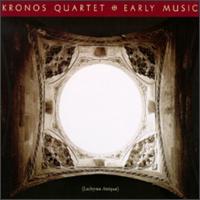
"View of Edo" (17th century) >>
"Edo ( 江戸 ), literally: bay-door, "estuary" ) ... is the former name of the Japanese capital Tokyo, and was the seat of power for the Tokugawa shogunate which ruled Japan from 1603 to 1868. During this period it grew to become one of the largest cities in the world and the site of a vibrant urban culture centered on notions of the "floating world".
From the establishment of the Tokugawa bakufu's headquarters at Edo, Kyoto remained merely the formal capital of the country. The de facto capital was now Edo, because it was the center of real political power. Edo consequently rapidly grew from what had been a small, virtually unknown fishing village in 1457 to a metropolis with an estimated population of 1,000,000 by 1721, the largest city in the world at the time.
Edo was repeatedly devastated by fires, with the Great Fire of Meireki in 1657 — in which an estimated 100,000 people died — perhaps the most disastrous. During the Edo period there were about one hundred fires, typically started by accident and often quickly escalating to giant proportions, spreading through neighbourhoods of wooden machiya that were heated with charcoal fires. Between 1600 and 1945, Edo/Tokyo was leveled every 25–50 years or so by fire, earthquakes, tsunami, volcanic eruptions, and war.
In 1868, when the shogunate came to an end, the city was renamed Tokyo (東京都, Tōkyō-to), meaning "eastern capital", and the emperor moved his residence to Tokyo, making the city the formal capital of Japan."
-- Wikipedia : Edo
"...considerations weighed on Tokugawa Ieyasu as he pondered the location of his castle and the organization of his city. He erected his citadel on the tip of the plateau where the Mushashi plain, which spread out to the west, dropped off toward Edo Bay to the east. Thus from his headquarters Ieyasu was able to control water and the rice-growing villages on the rich Kanto plain. He answered defense concerns by stationing his direct retainers, the bannermen (hatamoto) and the housemen (gokenin), in an arc around the portion of the perimeter of the city which fronted the plain. He instructed the daimyo to build their mansions to the east and south of the castle, and beyond those estates, again to the east and south of the castle, and beyond those estates, again to the east and south, Ieyasu reclaimed land to use for roads and merchant quarters. in other words, in laying out Edo, he preserved in a comparatively full sense the relationships between place of residence, elevation, and the requirements of the status-based feudal order."
-- Edo and Paris
"The concentration of warriors in the city stimulated the emergence of a unique Edo economy. The presence of a large stratum of newly enfranchised warrior nobles required the procurement of a tremendous quantity of consumer goods. Supplying such goods was the responsibility of official merchants and artisans who streamed to the capital from all parts of the country. Edo thus became a consumer capital ... [and] eventually, principles of warrior etiquette filtered down to Japanese society at large." -- Edo Culture












No comments:
Post a Comment